Meet the Land Cruiser 80 Series
The first J80 rolled into showrooms in 1990, ran concurrently with the 70 Series, and replaced the 60 Series. It was only available as a station wagon; the North American version had full-time 4WD. The 80 Series had four engine options in four trim levels.
Key Features of the Toyota Land Cruiser 80 Series
Besides full-time 4WD, some of the other key features included the following:
- The first station wagon body outside of the short-lived J55
- 1990 – New gen diesel
- 1990 – 1991 Open center differential lock: 4HI lockable – 4LO auto locked
- 1992 – ABS brakes
- 1993 – Larger brakes and longer wheelbase – optional front and rear axle lockers
- 1994 – Blue Marlin edition for the Australian market
- 1995 – Airbags
- 1996 – Canadian market saw the Land Cruiser 80 Series remarketed as the Lexus LX
- 1997 – A limited collector’s edition with Collectors Edition embroidery and emblems
- 1997 – 4,744 40th Anniversary Edition models were released in the United States
- 1997 – Japan stopped production of the Land Cruiser 80 Series
- 2007 – Venezuela stopped production of the Land Cruiser 80 Series
The Toyota Land Cruiser 80 Series was already a part of a family of vehicles with a solid footprint in the 4WD community. Still, the J80 changed the landscape with its station wagon body, legendary Toyota reliability, and formidable off-road capabilities.
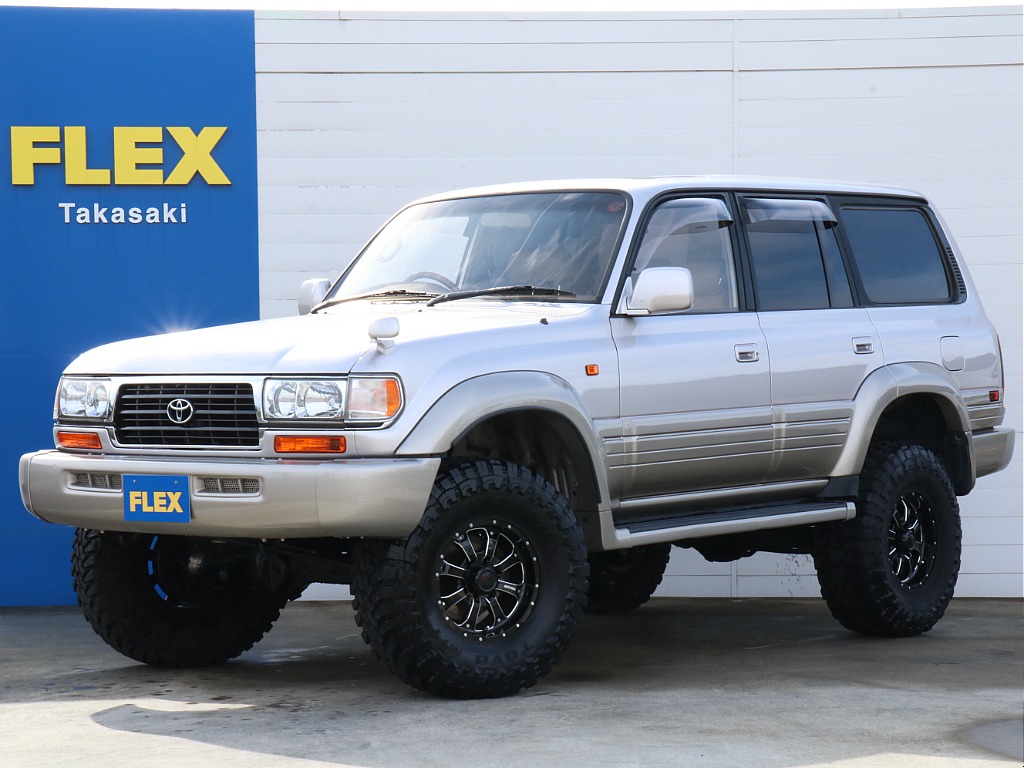
The 3F-E was no match for Cherokee’s AMC 4.0L; however, the 1992 4.5L inline-6 in the 1992 80 Series model outpowered the Jeep Cherokee. This engine produced more horsepower than even Suburban’s 5.7L V8. Coupled with the off-road reputation and an interior created for families, the 80 Series made significant inroads toward dominating the SUV market.
GM didn’t upgrade the Suburban until 1992; the Wagoneer was dropped down to one model – the Jeep Cherokee -and the Range Rover wasn’t updated until after 1994. These things combined to give the Land Cruiser 80 Series a dominant place in the competition.
Exterior Features and Design
The changing consumer landscape helped spur Toyota to make changes in the appearance and capabilities of the Land Cruiser. These updates are what we see in the J80.
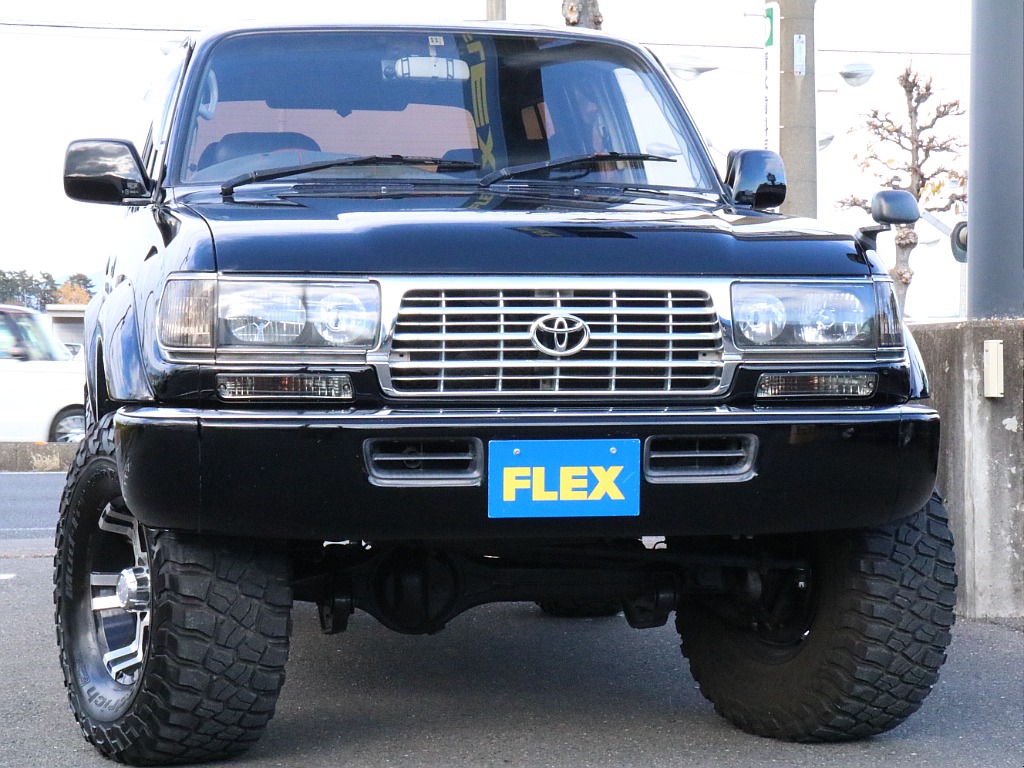
Further Exploration of the Exterior
The 80 Series exterior body style change was the biggest update from the J60, but in addition to the size change, it lost some of the boxy lines that made the Land Cruiser stand out from all the rest. Toyota rounded off the edges even more than they did when they gave the J60 a facelift mid-production run.
The barn doors were gone on the J60 in the U.S. market, and Toyota incorporated the split-open tailgate from those J60s into the 80 Series station wagons. Additionally, seating went from 5 to 7 in the new wagons.
Toyota gave the new J80 improved ground clearance and better approach and departure angles, which helped to maintain its legendary off-road abilities.
Styling and Handling
Styling may not have been a consideration in the Land Cruiser’s history since most of its life has focused on how hard it worked, not how pretty it was. Still, as the global market opened up and competition increased, styling became a concern.
The 80 Series was and is much more visibly appealing when compared to its predecessors. While the body isn’t racecar sleek, it has enough rounded edges to take the drag out. It has a coefficient drag of 0.35, improving fuel efficiency, and its seamless bodywork removed edges and lips that could drag it down.
The Jeep Wrangler has a Cd of 0.45, while the Corvette has a 0.286 Cd. The J80 falls between the two and is better than most when the average SUV has a Cd range between 0.35 and 0.45.
Engine and Performance Specs
According to Toyota, there were two gas-powered engines and three diesel options in the 80 Series.
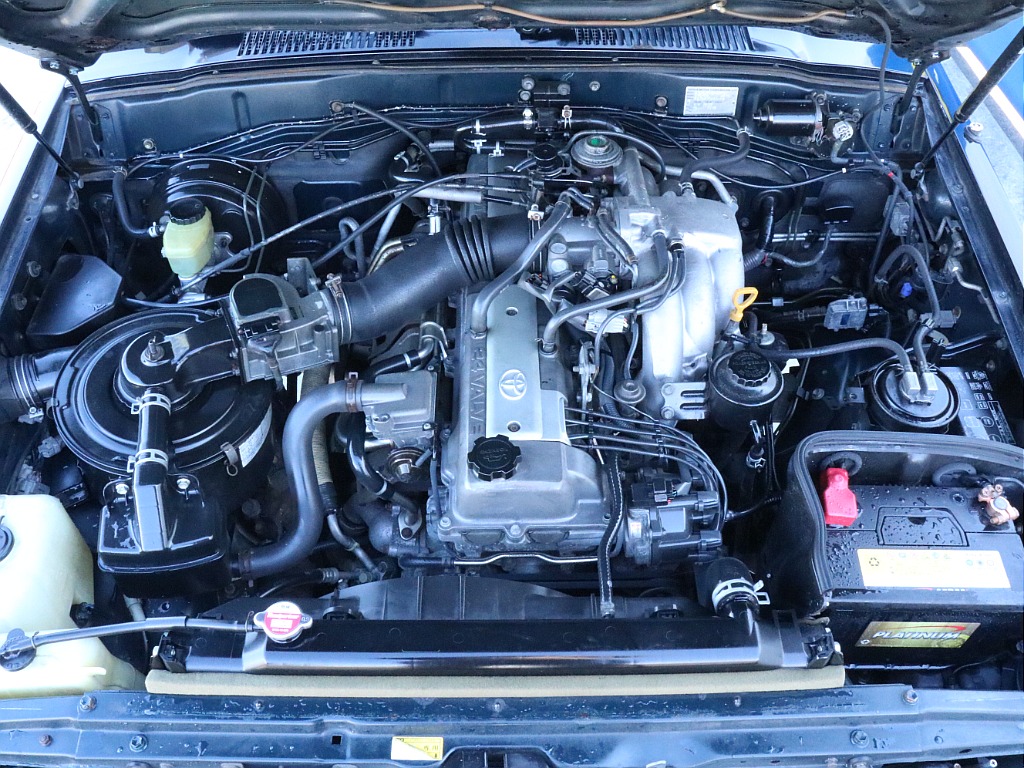
Engine Specifications
The initial engine in the Land Cruiser 80 Series was a 4.0L inline-6 (3F-E) until it was replaced in 1992 with another gas-powered engine, the 4.5L V8 (1FZ-FE), capable of 212 horses and 275 lb-ft of torque. It wasn’t fast but powerful, and the off-road performance was stellar. The latter engine was replaced in 1997 at the J100 model change.
The van version (VX Limited) of the J80 was equipped with an inline-6 4.1L (1HZ) diesel engine with a turbo option in the 1HD-T or 1HD-FT. Transmission choices included a 4-speed manual or automatic and a 5-speed manual.
On-Road and Off-Road Performance Capabilities
The full-time 4WD brought off-road readiness to the 80 Series and, coupled with the coil suspension, made driving over bumps and ruts more comfortable for everyone.
In 1993, the 15-inch wheels were replaced by 16-inch wheels, and a viscous coupling HF2AV transfer case replaced the non-viscous in the drum-braked models.
The front hub drive plates on the 1994 models were thicker. In 1997, the rear sway bar brackets were moved from the side to the bottom of the frame.
Optional front and rear locking differential allowed you to split the power 50/50, and the multi-terrain select automatically adjusted the acceleration, braking, and traction control for a smooth transition between surfaces. A snorkel air intake is available on the Sahara trim packages if you get in too deep.
All of the factory settings are great for off-roading, but if you’re considering mods, include a roof rack, suspension upgrades, bulbar, cargo nets, and taller coils on your list. Don’t forget high-quality shocks, too.
Interior Comfort and Features
The change to coil springs brought a passenger car type ride to the 80 Series, and along with that, Toyota upgraded the interior to appeal to passenger vehicle buyers who may also want to get off the asphalt and hit the gravel. While it is not as luxurious as its Lexus sibling, it is much better than the bare bones of the Land Cruiser’s early days, where the interior sides were metal.

Further Exploration of the Interior
With the focus on comfort, it makes sense that the interior would see a complete upgrade. In addition to an added rear seat (7-8 passengers, depending on the model), Toyota included convenience features like air conditioning and power windows.
The instrument panel was given a modern facelift with fewer angles and smoother lines, and a center console married the dash to the seating for a feeling of continuity. All control switches were now dash-mounted at the driver’s fingertips.
The rear passenger doors were bigger for easy access in and out of the passenger area, and the rear seats now have a recline feature.
Technology
One of the additions to the new 80 Series was a CD player with nine speakers in the Van and Wagon VX Limited packages.
Cruise control is now standard, as well as other “high-tech” options usually found on top-of-the-line 4WD SUVs. Another option was leather seats and a power moonroof.
Models Produced
The Land Cruiser 80 Series came in four model levels: STD, GX, VX, and VXL
Model Overview
The STD was the base model and equipped with a diesel engine, and the GX was a different trim level until 1993 when the STD merged with the GX. This move prompted an engine upgrade to the 1FZ-FE. The VX and the VX Limited were the top models in the lineup, and the differences lie more in the standard equipment than the power under the hood.
Side-by-Side Comparisons
| STD until 1993, when it merged with the GX | GX in 1993 & STD | VX | VX Limited |
|---|---|---|---|
| 5-speed manual | 1HZ until 1993, then used the 4.5L 1FZ-FE | 1HZ optional with automatic transmission | 1HZ |
| No rear seat | Automatic | LSD rear standard | Cooler/icebox until 1994, then discontinued |
| Diesel-powered | Gas powered | Moonroof standard | Automatic |
| Swing doors | ABS optional | Door-mounted spare tire – optional | LSD rear standard unless the F/R locking is chosen |
| LSD rear optional | Door-mounted rear spare tire – standard | ||
| F/R Locking optional |
Safety and Technology
Safety technology changed rapidly in the 1990s, and the Land Cruiser was slow to get up to speed, but it eventually equipped its models with the latest technology as standard equipment.

Safety Features
It wasn’t until 1995 that airbags, side curtain airbags, and adjustable shoulder belt anchors were made standard in the LC80.
By 1997, not only were these features standards, but Toyota also made their automatic braking system through AEB technology standard equipment.
Here’s a list of the other standard safety features:
- 4 wheel ABS
- Electronic Brake Distribution (EBD)
- Electronic Stability Control (ESC)
- Seat belt reminders
- Vehicle Stability Control (VSC)
- Collapsible steering wheel
As you can see, these safety features seem antiquated compared to today’s safety systems.
Advanced Technology
While these first safety features were not as advanced as those in today’s vehicles included under the Toyota Safety Suite name, they gave rise to the equipment we see now, like the radar-assisted cruise control and lane departure warnings.

Price
The price of the 80 Series has increased over the years as more drivers and off-roading enthusiasts discover the durability of the Land Cruiser. With raised interest comes higher pricing.
MSRP and Current Pricing
The original MSRP on the 1992, which remains popular, was $25,923, according to Kelley Blue Book. The national average for the 1992 LC80 is currently in the $4,000 range, but it makes a price difference based on mileage, condition, and all of the normal factors you consider when purchasing a used vehicle.
The 1997 was the last of the 80 Series, and it stickered at $46,293, which is significantly higher priced than the 199. Currently, the national average price is $ 10,000.
In 2024, the average price for the 80 Series across the models and years will be around $26,000.
User Reviews
Land Cruiser 80 Series user testimonials abound on the internet. From members of off-road user groups to consumer statements on business sites like Kelley Blue Book, you’ll find everyone has an opinion about which year and model was the best. They also enjoy discussing and comparing the best mods to get the most from your LC80.
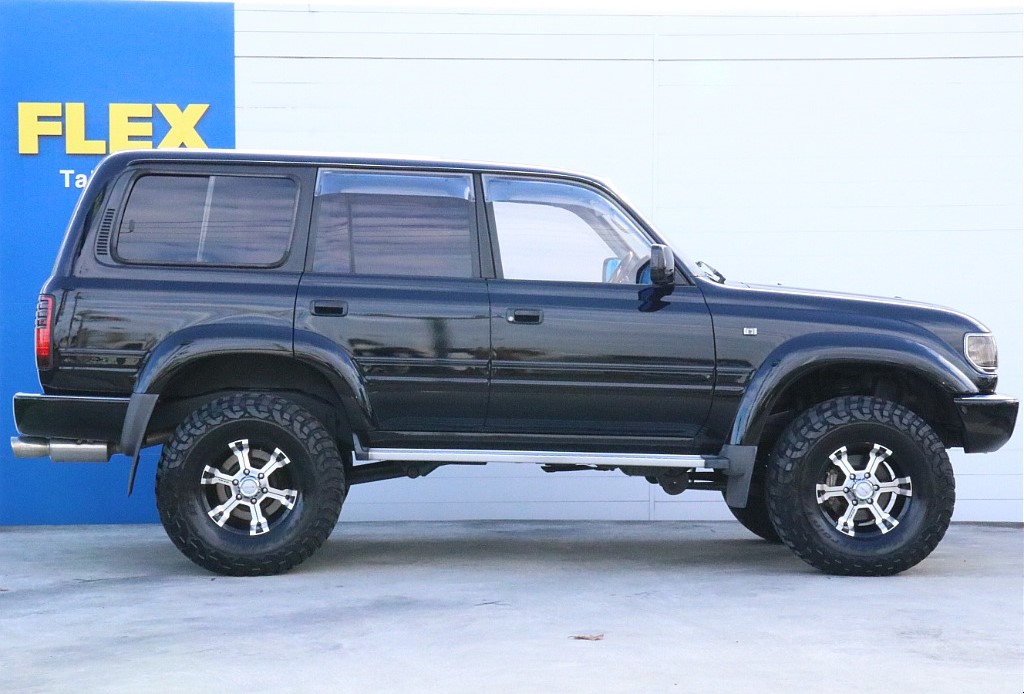
Owner Comments
A 1997 owner wanted to know why every car manufacturer didn’t make their 4WD as tough as his Land Cruiser. Another owner characterized his 80 Series as a cross between a mountain goat and a buffalo.
Another owner stated that he bought the reliable, super-rugged, capable, and ugly Land Cruiser after being in the military in the EU and being amazed at the flawless performance of Toyota trucks worldwide.
80 Series Owners Recommendations
Some LC80 owners have found the best features include reliability, even at 270,000 miles, the gearing, and its tank-like build.
Kelley Blue Book says consumers consistently rank the 80 Series 4.8 out of 5.0 stars, and 97% of the time, they say they would recommend the vehicle to their friends.
Comparison with Competitors
The 80 Series is a solid competitor in the off-road SUV market, as we’ve noted earlier when putting it side-by-side with the performance of the Cherokee, Suburban, and Range Rover of similar years.
Competition Overview
Only the Land Rover Disco II comes close to competing with the Land Cruiser 80 Series; however, the Disco II doesn’t come equipped with a center locking differential but does have an advanced traction control system and hill descent control. These two vehicles weigh about the same, too.
According to yotatech.com, in a head-to-head competition, these two models were locked in a heated battle on a thick, dense, muddy trail they both had to power through. The Land Cruiser took advantage of its taller tires to power through with little trouble, leaving the Disco II in second place. Naturally, it comes down to the driver in comparisons like these, but when the equipment is instrumental in winning, as in this case, the vehicle plays a big role in the outcome.
Side-by-Side Comparisons
For comparison’s sake, here is a side-by-side of the 1997 Land Cruiser 80 Series and its competition:
| 1997 Land Cruiser 80 Series | 1997 Jeep Cherokee | 1997 Range Rover | 1997 Chevrolet Suburban | |
|---|---|---|---|---|
| Horsepower | 212 @ 4600 | 190 @ 4600 | 236 @ 3000 | 290 @ 4000 |
| Engine | 4.5L 6-cylinder | 4.0L 6 cylinder | 4.0L V8 | V8 454/7.4L |
| Drivetrain | 4WD | 4WD | 4WD | 4WD |
| Payload | 1,719 | 1,150 | 1,170 | 3,357 |
| Wheelbase | 112.2 | 101.4 | 108.1 | 131.5 |
| Towing Capacity | 5,000 | 5,000 | 7,700 | 10,000 |
| Length | 189.8 | 166.9 | 185.5 | 219.5 |
| Ground Clearance | 10.8 | 7.8 | 8.4 | 7.6 |
| Weight | 4,751 | 3,129 | 4,960 | 5,243 |
| Turning Diameter | 40.4 | 35.9 | 39 | 43.4 |
Regarding the competition, the LC80 has a higher ground clearance, but the real difference is in Toyota’s reputation for reliability and durability. They return to their storied past and bring all of their hands-on experience in building a tough engine, drivetrain, and body to the longevity of the 80 Series.

Maintenance and Ownership Costs
Since the Land Cruisers are reliable, the cost of repairs can be reduced compared to domestic SUVs. However, it is an aging platform (over 40 years old), and the cost of repairs increases without consistent maintenance. If your LC80 has been properly maintained by regular oil and fluid changes and replacing wear and tear items, annual maintenance could be under $1,000.
However, if you drive your 80 Series into the ground, you can expect to spend much more on maintenance and repairs.
Maintenance Requirements
Maintenance requirements include changing the timing belt, replacing the brake pad, and repairing the clutch/automatic transmission fluid. The maintenance requirements are the same as those for any other Toyota vehicle.
Here is Toyota’s maintenance list for the 1997 80 Series:
1997 Land Cruiser 15,000 Miles – 12 Months
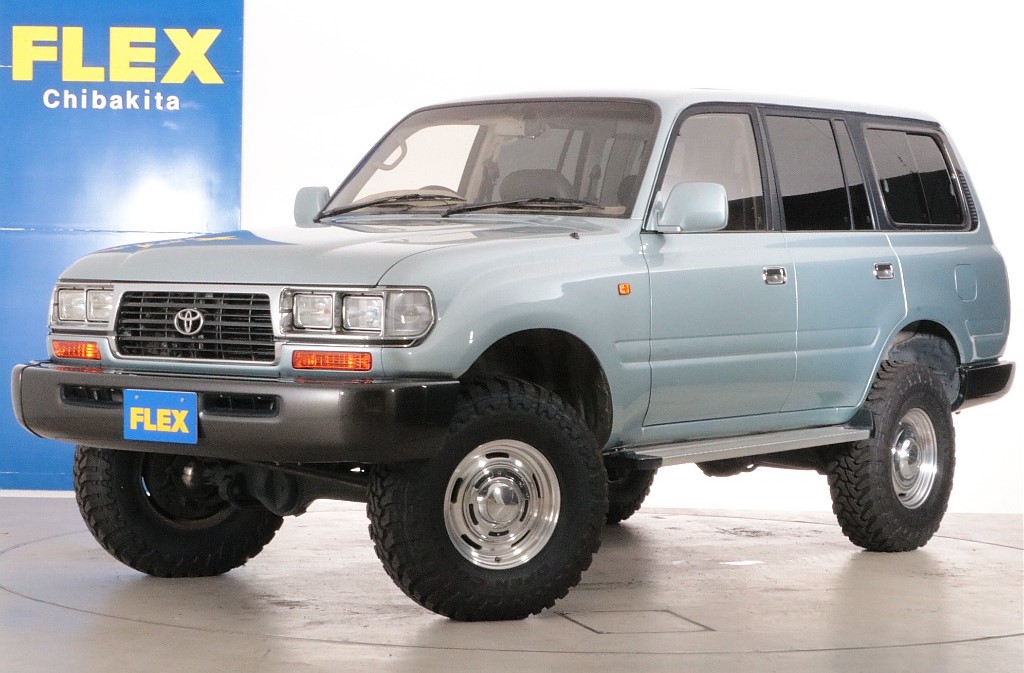
- Replace engine oil and oil filter
- Lubricate propeller shaft and re-torque bolts (4WD)
- Lubricate steering knuckle
- Rotate tires
Inspect the following:
- Automatic transmission and differential oil
- Ball joints and dust covers
- Brake linings/drums and brake pads/discs
- Exhaust pipes and mountings
- Steering gear box for leakage
- Steering linkages
Additional Maintenance Items for Special Operating Conditions:
- Driving on Rough, Muddy or Snow-Melted Roads
- Inspect nuts and bolts on chassis and body
- Driving on Unpaved or Dusty Roads
- Inspect engine air filter
Towing a Trailer or Using a Camper or Car-Top Carrier
- Inspect nuts and bolts on chassis and body
- Replace automatic transmission and differential oil
1997 Land Cruiser 90,000 Miles – 72 Months
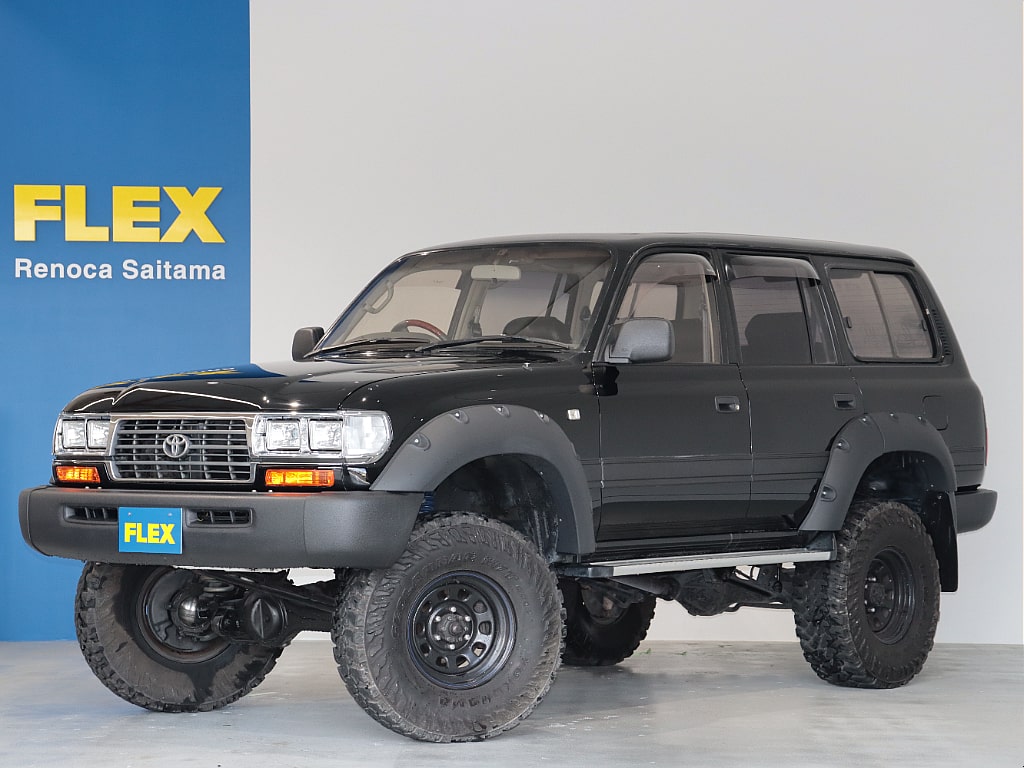
- Replace engine oil and oil filter
- Replace engine air filter
- Replace engine coolant
- Replace non-platinum spark plugs 1
- Lubricate drive shaft bushing
- Lubricate propeller shaft and re-torque bolts (4WD)
- Lubricate steering knuckle
- Repack front wheel bearings
- Rotate tires
Inspect the following:
- Ball joints and dust covers
- Brake linings/drums and brake pads/discs
- Drive belts
- Exhaust pipes and mountings
- Fuel lines and connections, fuel tank band, and fuel tank vapor vent system hoses
- Fuel tank cap gasket
- Steering gear box for leakage
- Steering linkages
- Transmission, transfer, and differential oil
Additional Maintenance Items for Special Operating Conditions:
- Driving on Rough, Muddy or Snow-Melted Roads
- Inspect nuts and bolts on chassis and body
- Towing a Trailer or Using a Camper or Car-Top Carrier
- Inspect nuts and bolts on chassis and body
- Replace transmission, transfer, and differential oil
Maintenance schedules like this are in the owner’s manual so that you can follow the recommended tasks. Obviously, the more miles you have, the more thorough your inspections should be when going over the components.
Long-Term Ownership Costs and Considerations
Over the life of your LC80, you could spend more than what is average for other comparable SUVs like the Jeep Cherokee. However, you can expect more miles from your Land Cruiser than the average Cherokee, even though some Cherokees have over 200,000 miles on them.
Pros and Cons of the 80 Series
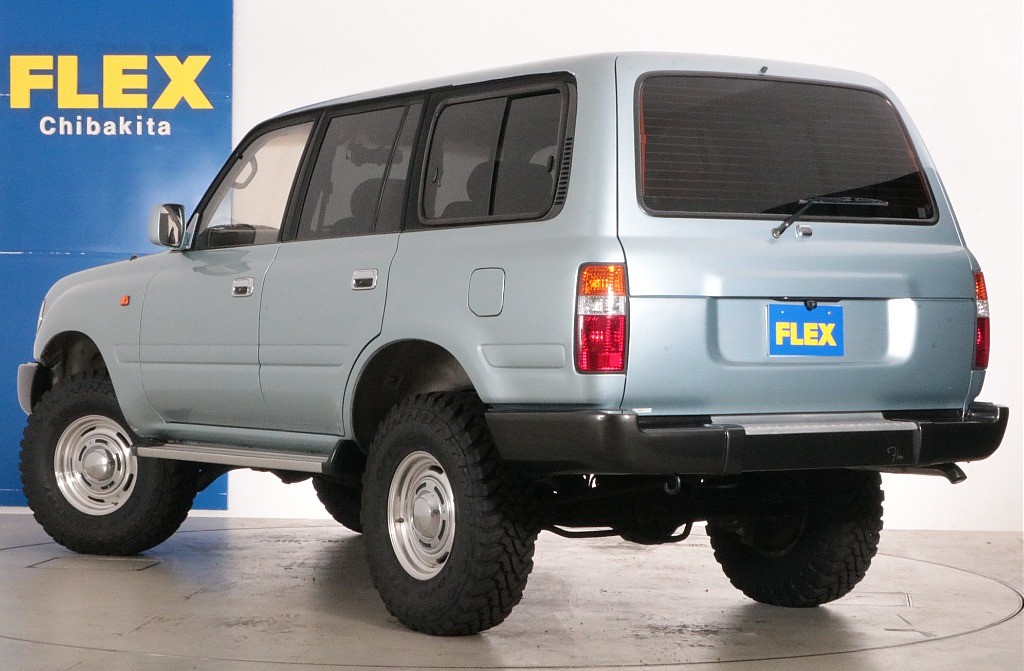
Like any other vehicle, there are pros and cons to owning an 80 Series Land Cruiser. Let’s look at a few of them:
Pros
- Bullet-proof off-road
- Excellent visibility
- Roomy interior and cargo space
- Parts are easy to find
- Easy to work on
- Wide choice of mods and aftermarket accessories
Cons
- Poor fuel efficiency
- Handling problems in the early models
- Maintenance costs are high
- Over 40 years old
Ready to Buy
Are you ready for an 80 Series?
There are many ways to buy your LC80; most are through traditional means such as dealers and want ads, but don’t overlook the internet as a source for used wagons. If you decide to buy online, do your due diligence and vet your seller.
Availability and Dealership Information
It might be a long time before you find the 80 Series you’re looking for, so be patient and keep looking. If you want someone else to search for you, let the FLEX Automotive staff do all the legwork for you. They have access to Land Cruisers outside of normal channels.
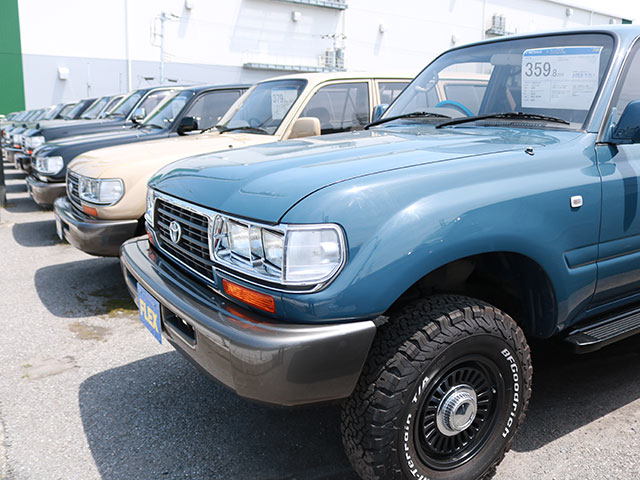
Finding an 80 Series Land Cruiser
You can scour the ads or hang out in the Land Cruiser forums, hoping to find someone ready to sell theirs. It would be very hard to find a domestic dealership with one sitting on their lot or locate one for you, so you want to seek assistance from professionals with Land Cruiser experience. The staff at FLEX Automotive consists of those professionals who have been locating and selling Land Cruisers since 1967 in Japan.
Availability at FLEX Automotive
FLEX Automotive not only can find the Land Cruiser of your dreams, but we can also help you design it to meet all of your expectations. With access to inventory in Japan and the ability to locate and bring back used Land Cruisers, you’ll find a selection of Land Cruisers to choose from.
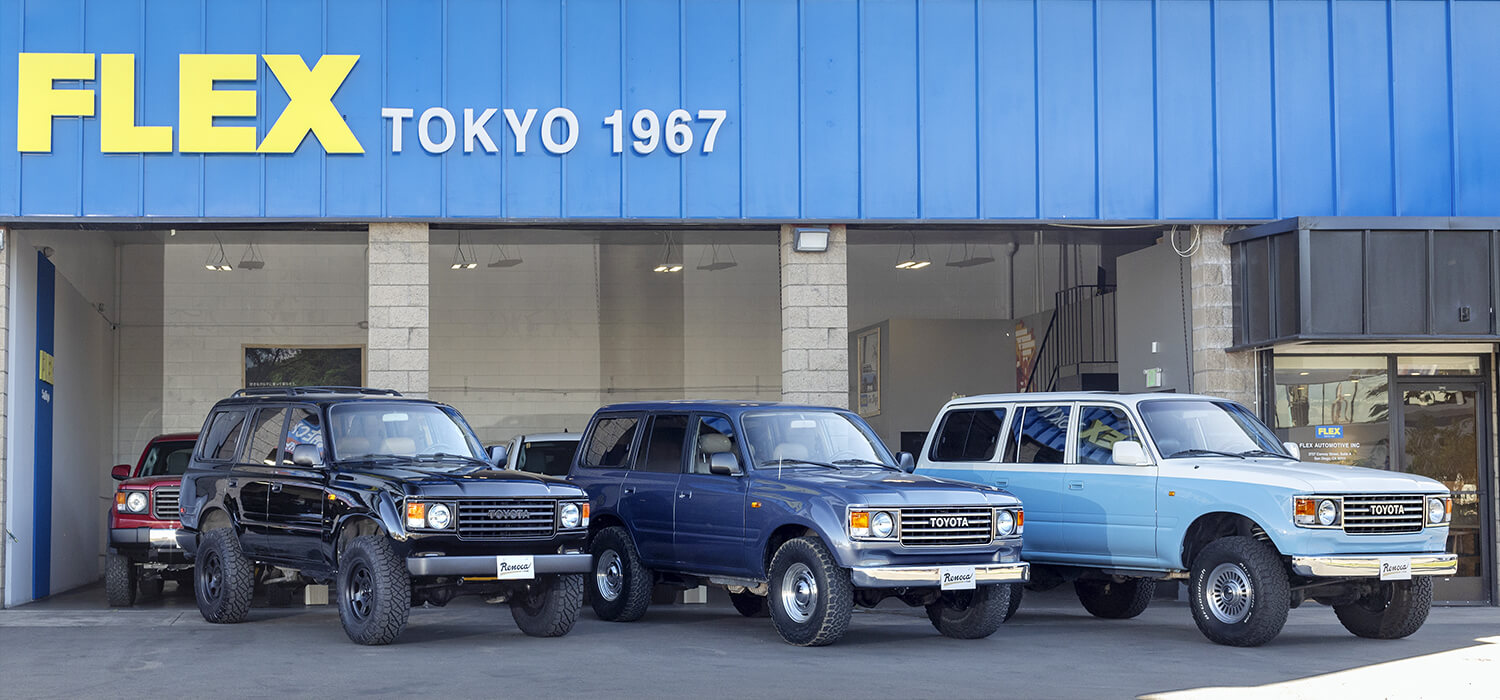
Conclusion
As you can see, the 80 Series has a solid place in SUV history and remains popular among off-road enthusiasts today.
Key Points
While Toyota created the 80 Series as a more family-oriented vehicle, they didn’t skimp on the off-road features on which they built the Land Cruiser reputation. Don’t be surprised if you drive your family off the highway and into the deep woods while on vacation. Who knows what’s over the next hill.
The competition may be close in some cases; however, the Toyota durability advantage makes the 80 Series a better choice, even though maintenance costs can be higher than other vehicles. The initial price may be higher than the competition, but the cost diminishes over the years when considering its longevity.
Ready for an 80 Series Land Cruiser?
From modern conveniences like CD players to high-tech safety features, the Land Cruiser 80 Series is a wagon for today’s family, even though it’s over 40 years old. While they are difficult to find, they are out there; don’t be afraid of higher mileage Toyotas. Read any Land Cruiser-focused off-road group, and you’ll find long-time off-roaders giving the 80 Series thumbs up even with higher miles.
Choose FLEX for Your 80 Series Land Cruiser
If you’ve given up on finding a used 80 Series on your own, enlist the experts at FLEX Automotive to handle the search and delivery of your new vehicle. In addition, FLEX Automotive is known for its ability to take an older model and modify it to make it better than it was. We use modern upgrades to help you design a 4WD that meets your lifestyle.
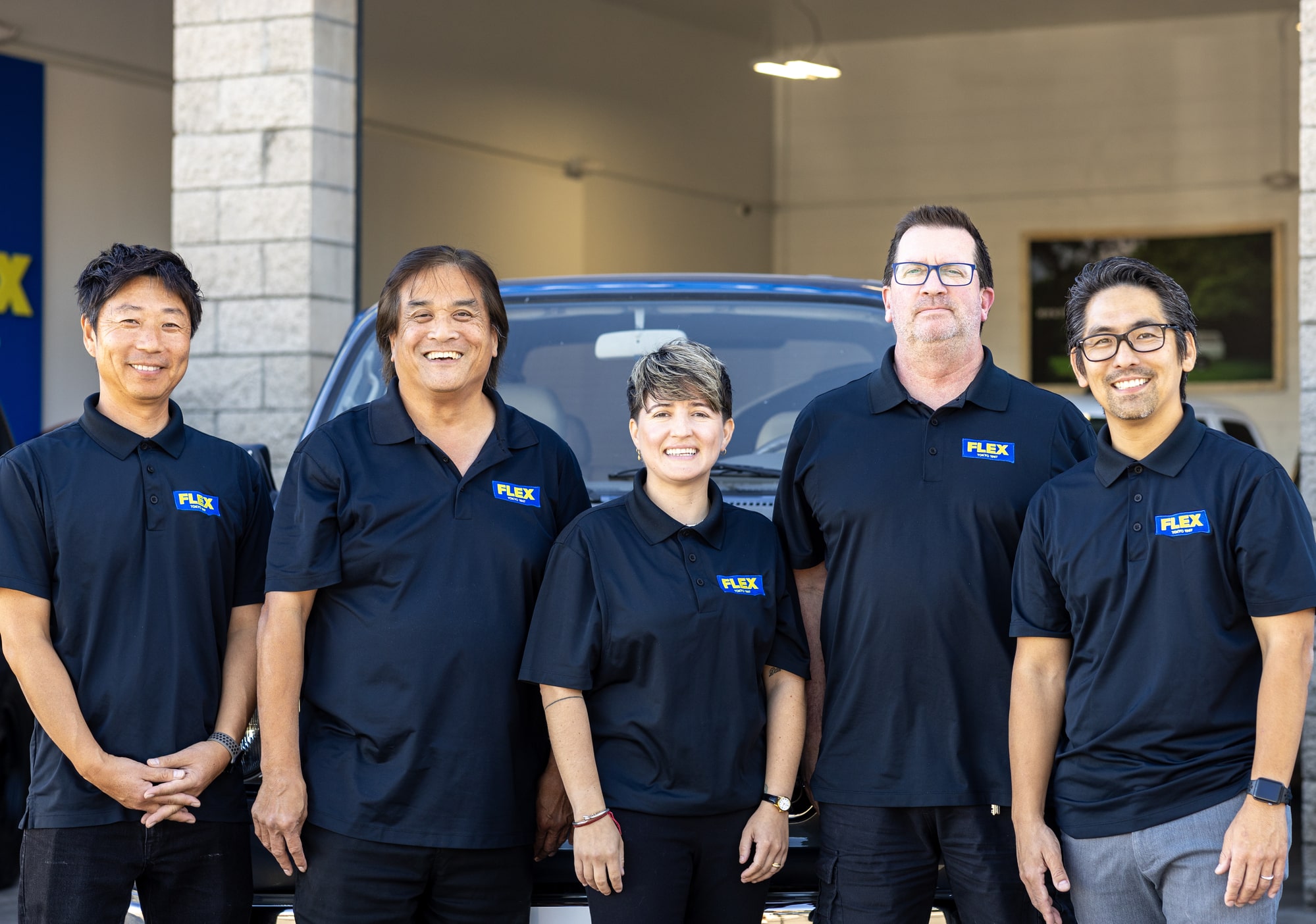
FLEX Automotive is the Land Cruiser Owner’s Destination
In addition to upgrading an 80 Series, they specialize in their Renoca lineup. The name is derived from the words renovation and car, and the purpose is to give a more modern vehicle a retro look while updating the interior and adding the most current high-tech gadgets.
The FLEX Automotive’s Advantage
We offer exciting possibilities for creating the 4WD SUV of your dreams. Over 50 years of working with Land Cruisers gives us a definite advantage over the competition. For more information, contact us.





